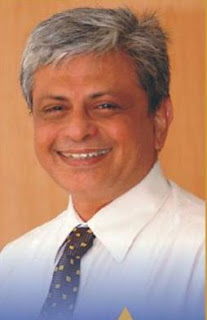The objectives of this short ten minute exercise -
- To learn a tool that will be helpful in work life
- To apply the learning within a few minutes of learning
- To use this as a morning ritual to start a great day
Step 1 - the warm up
Keep your journal and pen at hand
Sit in a relaxed position with an intent to go into a ‘flow state’ to learn something new
Take three deep, powerful breaths to lock in your focus and start the next step
Step 2 - the learning
About Ikigai
Ikigai, a Japanese concept meaning "reason for being," helps individuals and businesses find purpose by aligning passion, mission, vocation, and profession. Ikigai was popularized globally through books like Ikigai: The Japanese Secret to a Long and Happy Life (2016) by Hector Garcia and Francesc Miralles, Ikigai-ni-tsuite (1966) by Mieko Kamiya etc. Ikigai promotes meaningful work and balance. The concept’s origins trace back to ancient Japanese philosophy.
Situations (examples) where this tool can be best used
- Career path planning for employees
- Leadership development
- Enhancing employee engagement
The top three mental muscles (competencies) developed by practicing this tool
- Self-awareness - Recognizing personal strengths and areas for improvement
- Purpose and meaning - Understanding one's reason for being and aligning with organizational goals
- Emotional intelligence - Understanding and managing emotions to connect with others
A corporate story to understand the usage of this tool
Jack Dorsey (Twitter and Block) story – Driving innovation in communication and finance through Ikigai
Jack Dorsey, co-founder of Twitter and Block, exemplifies the concept of Ikigai—the Japanese philosophy of finding purpose at the intersection of what you love, what the world needs, what you are good at, and what you can be paid for.
What he loves - Dorsey’s fascination with simplicity and connectivity drove his passion for creating platforms that streamline communication (Twitter) and financial transactions (Block).
What he is good at - Dorsey’s strengths lie in his ability to conceptualize innovative products and his design-centric approach, which emphasizes user experience.
What the world needs - In a fast-paced, digital age, people needed a platform for concise, real-time communication. Twitter revolutionized global communication by enabling instant sharing of ideas. Similarly, Block addressed the world’s need for accessible and seamless financial solutions.
What he can be paid for - By monetizing Twitter through advertising and Block through transaction fees, Dorsey built financially sustainable ventures.
Dorsey’s alignment with Ikigai allowed him to drive innovation in two critical domains—communication and finance—while creating lasting value for society. His journey highlights the power of purpose-driven entrepreneurship in transforming industries.
A story from the World Wars
My personal story
What You Love - I always loved to talk to people who excelled in something. I loved to listen to them about their hobbies and passions.
What You Are Good At - Our company got our strengths assessed using Strengthsfinder. Their expert, looking at my top strengths, told me that I could be an author. I had never written a book in the past. My boss sent me on leave and asked me to return only after writing a book (who can get such bosses?). And I did write my first book.
What the World Needs - The world needs leaders who understand their people’s need to pursue hobbies/ interests. My book contained imaginary stories about a CEO who leverages employees' talents for CSR and Branding.
What You Can Be Paid For - Theoretically, the book I wrote has a potential to be implemented in all organizations. This could be a business proposition for me
Step 3 - the reflection
Sit back, go down memory lane, think of various events in your work life where you could have used this learning.
If nothing comes to mind, think of a situation that would help you answer any one of these interview questions.
- “Where do you see yourself in five years?” - Highlight how you plan to build on your strengths to achieve mastery in your field
- “Can you tell us about a time when you found meaning in your work?” - Share a project or role where your skills and interests met a significant need, creating a sense of fulfillment
- “How do you approach personal and professional growth?” - Explain how you use self-awareness to prioritize roles or skills that align with your Ikigai for continuous development
Step 4 - the practice
Apply your learning to the situation you selected above.
- What you love
- What you are good at
- What the world needs
- What you can be paid for
Step 5 - the victory lap
Celebrate your achievement for a minute. Maybe a quick victory lap doing some energizing exercise?
**
To those who felt, “I can’t see any tangible benefits. I won’t get promoted just because I know some tools. Why would I spend time and effort on this?” - Do you feel that the last ten minutes were worth the effort?
This exercise is not only about management tools. It’s about building a neural pathway. And it’s about my mantra for creating small daily acts of feeling successful and happy.
Don’t forget to carry this image 👇 in your mind. There could be a great situation where you may want to use the tool. Keep a log of all such situations. This practice will help you when you want to train someone.
My congratulations for your first dose of the day of success and happiness. Have a great day ahead.

No comments:
Post a Comment